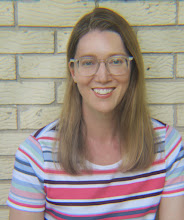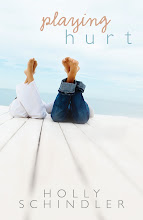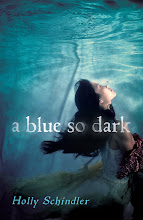Tuesday, July 22, 2014
FERAL, GENRE, AND BLOG REVIEWS
Genre may very well be the most important marketing tool a book
has. After all, genre is often the
yardstick by which a reader measures the book’s success.
Case in point: My forthcoming FERAL is a psychological
thriller—an important distinction. While
this subgenre does borrow from more action-oriented categories (for example, the
straight suspense-filled thriller, mystery, and horror), the primary focus is
on, well, the psychological. Like classic psychological thrillers, FERAL
features a Hitchcockian pace and focus on character development (here, we’re
exploring the inner workings of the main character, Claire Cain). The oft-used water metaphor (employed
frequently in psychological thrillers to represent the subconscious) is
incorporated in the form of a brutal ice storm (and represents Claire’s “frozen”
inner state, her lack of ability to move on from a violent act, though she desperately
wants to). The ending and explanation of
what has been happening in the town of Peculiar is also an exploration into and
portrait of Claire’s psyche—as it should be; the rest of the book is an
exploration of where she is mentally, as well.
Ultimately, FERAL is a book about recovering from violence—that’s an
inner process, a terrifying process. The
classic psychological thriller allowed me to explore that frightening process
in detail.
That having been said, I’ve been seeing some reviews go live
that list some of those classic psychological thriller elements (the slower
pace, etc.) as flaws. Each book is a
learning process—I would no more go back and change FERAL than I would ever
expect to change anyone’s mind who’d written a less-than-glowing review;
however, I do read all my reviews and think critically about them. This time around, the critique’s got me
thinking about the classic psychological thriller. There’s no doubt that the subgenre is
becoming less frequently represented, especially by the box office. I wonder how many young readers are familiar with Hitchcock’s work. How many know only Pyscho’s shower scene, and have never watched the rest of the
film.
I wonder about the expectations of modern, young readers
when they see the label “psychological thriller.” Do they now expect the emphasis to be on “thriller”
rather than “psychology”? Do they expect
an action-oriented piece? Is Hitchcock
even relevant anymore to young story-seekers?
I’m also incredibly curious: How do you, as a blogger, use
genre to help write your review? Do you
consider the genre (and subgenre) as you determine the success or failure of a
book? Do you review by the gut rather
than the head (it either hits you or it doesn’t)?
Monday, July 21, 2014
CATHERINE RYAN HYDE ON WRITING FOR YOUNG READERS
As a fan of both MG literature and Catherine Ryan Hyde's work, I'm anxious to get my hands on her forthcoming MG edition of PAY IT FORWARD. So anxious, in fact, I asked her to to stop by the blog to talk about the process of turning an adult novel into a book for young readers:
Where did the idea for a young reader
version of PAY IT FORWARD originate? Was it your idea, or were you
approached to do a young reader version?
I
think the idea grew organically as the book found its audience. It’s a book
with a 12-year-old protagonist, yet it was written and published for adults.
Younger readers never occurred to me, or to my publisher, until the American
Library Association put Pay It Forward on its “Best Books for Young Adults”
list (now called Best Fiction for Young Adults). That honor recommends it for
kids 12-18. Then the Pay It Forward Foundation, which was originally solely an
educational foundation, got going, and that did a great deal to get the Pay It
Forward idea into classrooms. But the book could not follow. Too much adult
language and material. It became clear after the fact that kids younger than
Trevor loved the Pay It Forward concept. It was hard to miss the simple fact
that the book would be great for them if it could be made suitable for that age
group.
We
approached Simon & Schuster with the idea of a book for kids. They didn’t
approach us.
What were some of the biggest global
changes--to plot, characters, etc.? What was the reasoning behind making
those changes?
Very
few changes had to be made to the plot. And this is as good a moment as any to
point out my opinion: this would not work with every book. Pay It Forward was
already a book with a very simple, universal theme. Definitely simple enough
for readers of almost any age. I mean, it was a book about an idea created by a
child.
Now,
the characters needed some work. One was a homeless drug addict, another was an
unscrupulous gangbanger. I didn’t make either of them disappear. But I softened
the depictions of their actions quite a bit. I had to do something similar with
Gordie, a gay and gender non-conforming character. I didn’t take him out. I
wouldn’t have if asked to. Because it may be wrong to lose your life to hard drugs
or break the law, but it’s not wrong to be gay, or express your gender
differently. Unfortunately, most of the time we spent with Gordie in the adult version
depicted his patterns of trying to hook up with men. But he’s still there.
Trevor still saves him, and it’s clear that he’s with his boyfriend. So there
are still gay characters in the book. But they just had to be written differently,
because many of their details were too adult.
The
reasoning behind making all of these changes was the same. The goal was a G
rating. My editor at Simon & Schuster and I agreed that it would be the
same book but with a G rating. So everything that was done was done in service
of that goal.
Conversely, what were the smaller
changes--pacing of individual scenes, sentence structure?
The
pacing seemed almost to take care of itself. Because as we removed the adult
material, it got much shorter and tighter. Then it was mostly an issue of
spotting when a concept or a word choice was unsuitable for the intended
audience. Not inappropriate, necessarily, but wrong for the reading level. I
caught the most obvious ones on the first revision, then my editor, who knows
more about middle grade fiction than I do, caught a whole other series that I
wasn’t sure about. It was really a pretty good example of how an author and
editor can put their heads together and get something done.
It
may sound like a strange answer, but I’m not sure I did either. I don’t think I
got into a middle-grade voice and I don’t think I put it completely in a
child’s world. Because it was not rewritten from scratch, I think the overall
tone may still be more mature. The parts that are the writings of Trevor were
always written through a 12-year-old’s perception. The rest is in third person.
I guess you could say it’s a grown-up book made suitable for kids. Which might
not work in every case. But I think in this case it works, and kids will like
it.
What was the biggest surprise?
Did writing and editing this version allow you to uncover any new layers of the
story?
I
guess the biggest surprise was the ending. I was sure I would leave the ending
the same. In fact, my editor and I discussed that I would leave the ending the
same. Lots of people question it, but I stand by it. But when all was said and
done, I left it a bit more open. I still think, in my mind, that it ended the
way the adult edition did. But readers can think otherwise if they choose. It
was a compromise.
What's the difference in promoting an
MG book, as opposed to adult or YA material?
YA
promotion seems to rely heavily on teens having their own blogs and interacting
on social networks. Adult… well, I don’t think anybody really knows how adult
promotion works. It’s not like adults all hang out at the same watering hole.
But middle grade kids go to school, so I think there’s a strong approach to
“the gatekeepers”—the teachers and curriculum planners and school librarians—because
they’re the ones who can really get these books to kids.
I
ran into the difference when I posted a giveaway (on my blog) of some advance reader’s
copies. I realized the people who read my blog are adults, so I asked our Pay
It Forward Foundation president, Charley Johnson, to RT and share a link to the
post. Because he has a line on the “Pay It Forward people.” The people who
follow him are the people who have been wanting to get kids involved all along.
The cover's really beautiful. What
can you share about the design process, cover artist, etc.?
The
only thing I can really share about it is my surprise and enthusiasm. As with
most “Big 5” publishers, there wasn’t a lot of author involvement in developing
the new cover. They just ran this by me and said they hoped I liked it. My track
record with traditionally published covers has been spotty at best. (My new
publisher, Lake Union, which is an Amazon Publishing imprint, has given my
books some great covers.) But in this case I think they were spot on.
The
only kind of fiction I really like to read is contemporary—which is really just
another way of saying realistic—fiction. This is true regardless of the
intended age group. In middle grade books, for example, I was never a big fan
of Harry Potter, but I loved Freak the Mighty. I like human stories.
I
just want to add that I’m not insulting genre fiction or telling other people
what they should like. I’m just telling people what I like.
Would you write another--even wholly
original--MG?
You
know, that’s a good question. No plans at the moment. But if there’s one thing
I’ve learned, it’s that you never know where life will take you.
How do you ultimately hope the book
will be implemented--in classrooms, by young readers, etc?
The
ultimate goal is curriculum inclusion. Because Pay It Forward—the real-life movement—is
just perfect for kids. The reason I made Trevor a kid in the adult book is
because I think there’s an advantage in catching people with this idea before
they’re too jaded. So there’s a delicious excitement in waiting to see if this
will be widely read, and—if so—if this next generation will change the world
through kindness. It could happen. Kids are a powerful force.
~
Catherine's next book for adults, TAKE ME WITH YOU, is set to release tomorrow! I also asked Catherine to tell us how this new read is both like and different from her previous work:
"Take Me With You is like my other books in that it's about human bonds.
Unexpected bonds among people who are not related by blood, and who
crossed each other's paths in unusual ways. That tends to be a common
theme in my work. Although I have done "road trip" stories before, this
is the first time I've taken my own style of traveling--RV trips to
National Parks to hike and bask in the beauty of nature--and woven it
into fiction. Every place August and Seth and Henry go is a place I've
been. That gives it an extra dose of my own life passion, I think. And I
think that sets it apart from my other novels."
Thursday, July 17, 2014
FERAL - SNEAK PEEK!
I'm delighted to share a new sneak peek of my forthcoming FERAL:
Pre-order FERAL from your favorite outlet.
Wednesday, July 9, 2014
THE JUNCTION OF SUNSHINE AND LUCKY GIVEAWAY!
I'm deep in revisions of my next YA for HarperCollins; while I'm hard at work, I'm hosting a giveaway of THE JUNCTION OF SUNSHINE AND LUCKY at Goodreads.
Happy summer reading!
Enter to win
Happy summer reading!
Goodreads Book Giveaway
The Junction of Sunshine and Lucky
by Holly Schindler
Giveaway ends July 16, 2014.
See the giveaway details at Goodreads.
See the giveaway details at Goodreads.
Subscribe to:
Comments (Atom)








































